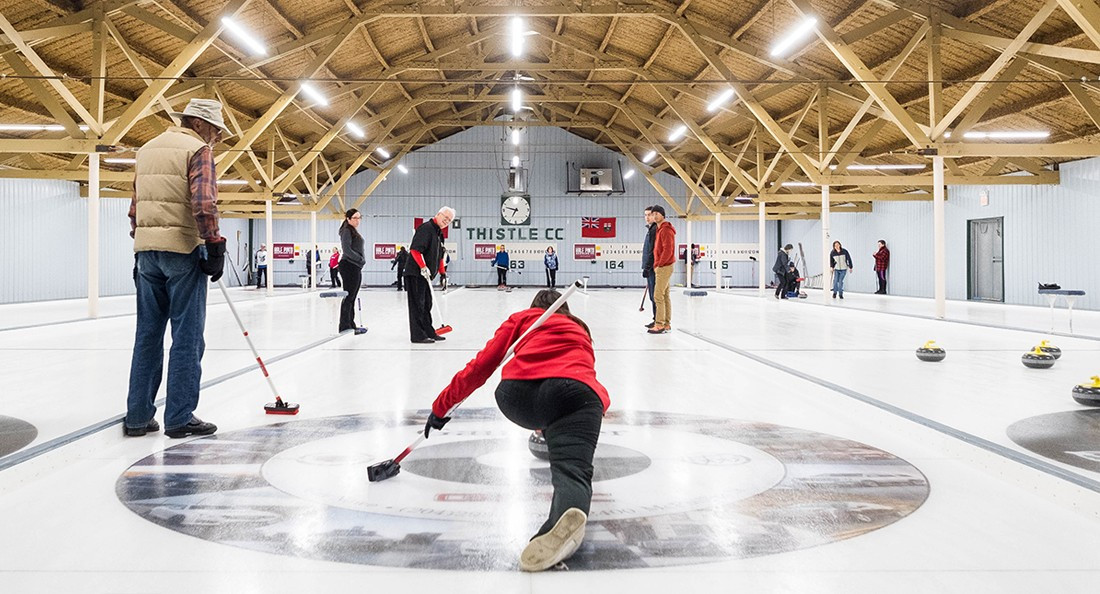Past, present and future of Winnipeg curling clubs
Clubs built in the 20th century adapting to new realities
Curling clubs are weathering social changes, but many community members continue to use them for recreation, including both the sport itself and the atmosphere.
“We have folks from age eight to 88 who curl at our club on a weekly basis,” Jim MacGregor, president of the board of directors of the Fort Rouge Curling Club, says.
He notes that in the early 20th century, there were many curling clubs, community clubs, schools and churches built in Winnipeg. These provided common spots for community members to gather for social, recreational and religious activities. Fort Rouge, MacGregor says, was an example of this trend.
The Fort Rouge Curling Club’s first building was on Kylemore and Osborne and built in 1919. The club moved to its current location at 750 Daly St. S. in 1959.
“A lot of folks from Fort Rouge, of course, use the Fort Rouge Curling Club,” MacGregor says. But he adds that now the community which uses the club
is wider.
As an example, he says he curls and is president of the club but lives in Charleswood. MacGregor adds that there are curlers at the club who live in St. James and St. Vital, as well as a few from out of the city in Oakbank, Man.
Ryan Palmquist, who curls at the Heather Curling Club in St. Boniface, finds that the club keeps him in touch with old friends.
“I have a group of friends of mine. They’re not friends I see very often – they’re buddies from way back – they’re now my curling friends, in a lot of ways,” he notes.
Palmquist describes the Heather Curling Club as being in the heart of St. Boniface and so attracts many local residents. He adds that it is one of the main Francophone curling clubs in Manitoba.
Curling clubs in Winnipeg, however, are not without their challenges. The West Kildonan Curling Club, established in 1918, shut down in September 2017 due to dwindling membership and financial difficulties. The Wildewood Curling Club in Fort Garry closed in 2014.
MacGregor says there is more competition for people’s leisure time now, with web-based activities like social media as an option. Despite this, he says the Fort Rouge Club is doing well, with approximately 1,500 people who curl there every week.
Expanding out from their traditional roles may preserve clubs into the future.
“If there’s one thing I’ve always thought, it’s what great hangout spaces they are, even aside from the curling,” says Palmquist.
Citing the Army, Navy and Air Force Club 60 in Osborne Village, he believes there is a trend of young people going to non-traditional bars for social activity that could buttress curling clubs.
MacGregor says the Fort Rouge Curling Club building serves as a local restaurant and gathering place for people in the immediate area. There is a café in the club’s downstairs, going through a remodelling expected to be done by Christmas, and a lounge upstairs, he says.
Published in Volume 72, Number 10 of The Uniter (November 16, 2017)







